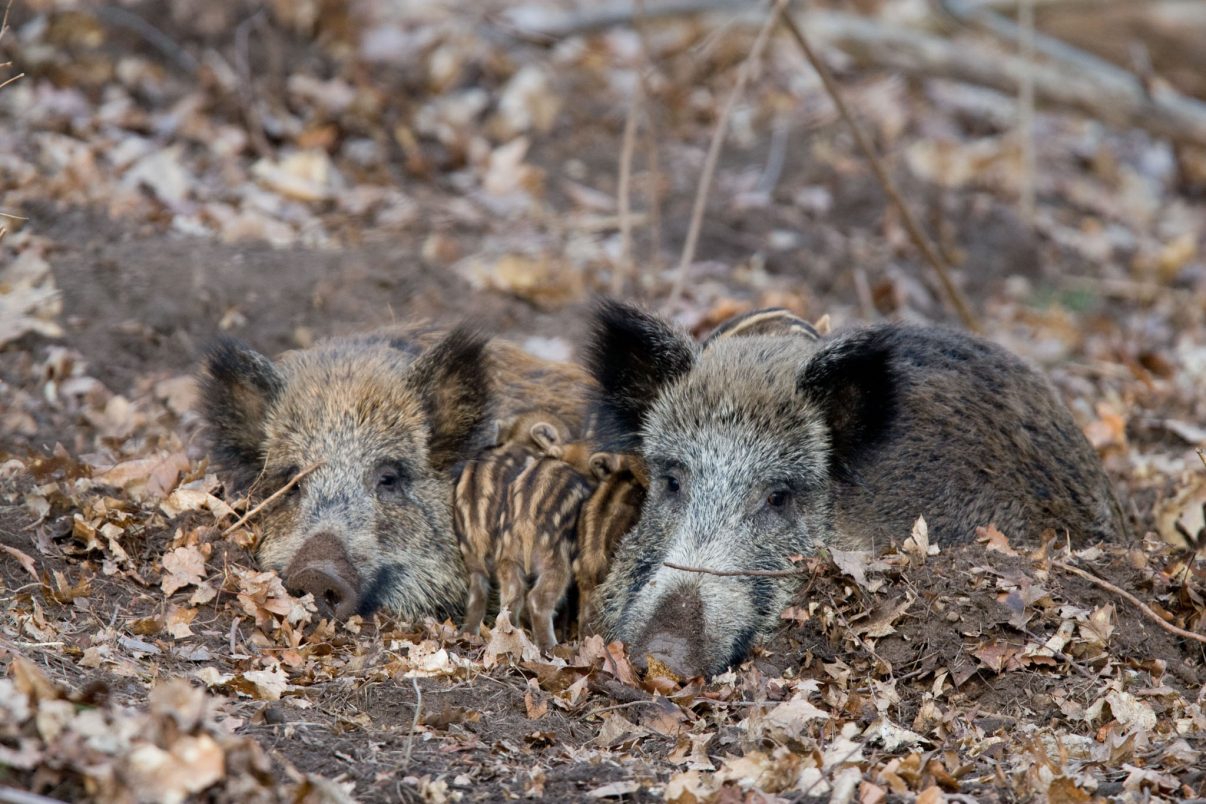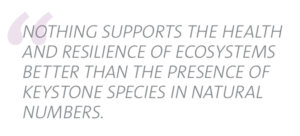Rewilding frequently involves restoring populations of so-called “keystone species”. But what exactly are they, and how can they improve rewilding outcomes?

Amplified impact of rewilding
Rewilding at its core is about the mass restoration of ecosystems, creating space where nature can govern itself without human intervention. Supporting wildlife comeback to create more complete species guilds is part of this restoration process.
At Rewilding Europe, we recognise the critically important ecological role of all wildlife species, regardless of their position in the food chain. But by restoring populations of so-called “keystone species” – organisms that have a disproportionately large effect on their natural environment relative to their abundance – we can accelerate and amplify the impact of rewilding on European landscapes.
All animals are not equal
 Every species plays a role in nature, and all species are part of the web of life. But just as in the theatre or in film, some species play more important roles, punching above their weight when it comes to natural functions, structures and processes.
Every species plays a role in nature, and all species are part of the web of life. But just as in the theatre or in film, some species play more important roles, punching above their weight when it comes to natural functions, structures and processes.
“Keystone species have low functional redundancy,” explains Raquel Filgueiras, Rewilding Europe’s Head of Rewilding. “This means that when populations of these species decline or disappear, there are very few or no other species that can fulfill their role. Ecosystems then degrade, and sometimes completely collapse.”
Animals like the sea otter along the Pacific coast of North America and the wolf in Yellowstone National Park are classic examples of keystone species. By restoring a trophic cascade, the reintroduction of the wolf in Yellowstone in 1995 resulted in the return of certain animal and plant species, the restraint of others, and stimulated the recovery of a richer, more balanced ecosystem.
A European context
Today Rewilding Europe is reintroducing keystone species in many of its operational areas – from European bison in the Southern Carpathians and red deer in the Rhodope Mountains to Konik horses in the Danube Delta and Tauros in the Velebit Mountains. In other areas, keystone species such as vultures and wolves are returning of their own accord.
These vital species, including top predators and large herbivores, drive ecological processes. Wildlife is now making a comeback in Europe, but numbers are still low. Rewilding will accelerate their recovery and restore important food chains and trophic cascades.
Ecosystem role

Keystone species not only exert their beneficial effects downward from the top of the food chain – such as with wolves and lynx – but upward from the bottom (such as with beavers and rabbits). A wide range of organisms – including plants and fungi – can actually be considered keystone species, although the majority are animals.
Raquel Filgueiras is keen to stress that restoring or encouraging the comeback of keystone species isn’t just about boosting natural diversity. “Fully intact, complex ecosystems perform many essential functions – purifying air and water, turning decaying matter into nutrients, preventing erosion and flooding, mitigating climate change and enhancing people’s wellbeing,” she explains. “Humans need keystone species to maintain the health and resilience of the ecosystems that support us.”
Annual Review 2018
Much of this article was taken from a longer story entitled “The Keystone Concept”, which featured in Rewilding Europe’s Annual Review 2018.
We invite you to view this beautiful 88-page publication, which contains a wide range of insightful feature stories, stunning photography and illustrative infographics, showcasing the progress made in our own rewilding areas and the growth of Europe’s rewilding movement in 2018.
You can order your own hard copy of the Rewilding Europe Annual Review 2018. It is for free, except shipping costs.
